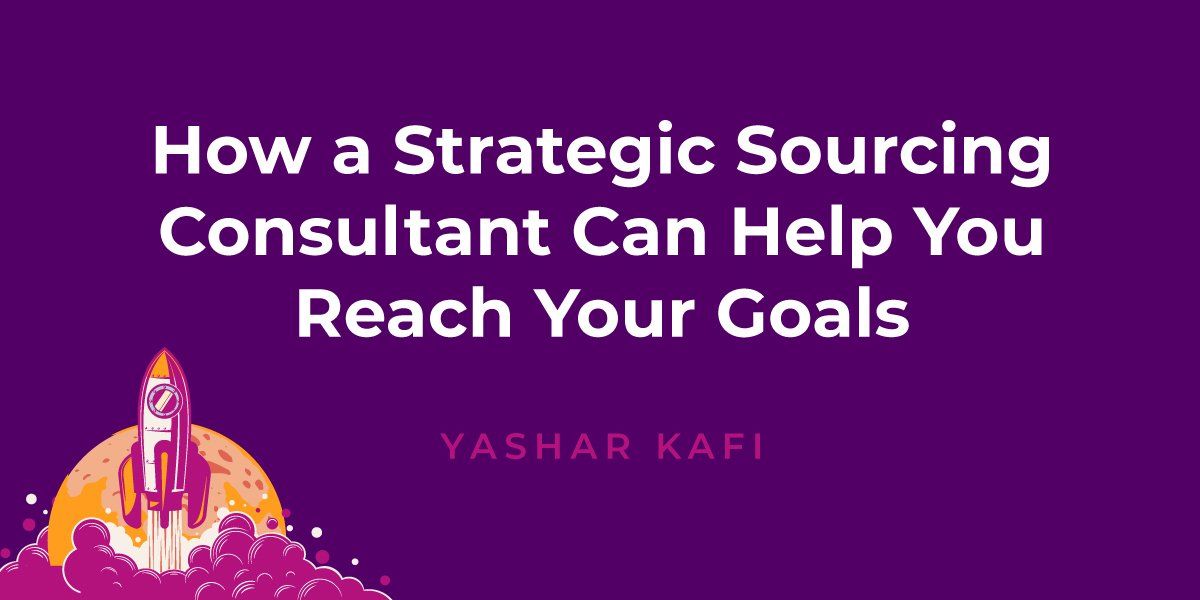How a Strategic Sourcing Consultant Can Help You Reach Your Goals
For large-sized companies especially, when you are trying to scale your strategic sourcing process and implement digital transformation, it can seem like mission impossible. Just knowing where to start alone can seem overwhelming. The process has likely been started and stopped with failed implementations standing in your way. We look at how hiring a strategic sourcing consultant to lead operations can be useful to teams of all experience levels.
What is Strategic Sourcing?
When we talk about strategic sourcing, we are describing the process that involves creating a proactive and continuous evaluation of how your organization sources. The goal of strategic sourcing is to continuously improve and re-evaluate the purchasing activities of your business to reduce your costs.
Why Organizations Are Implementing Strategic Sourcing
The pandemic and other Black Swan events have made it a business imperative for all organizations working in supply chain or procurement to implement a proactive strategic sourcing protocol. Just look at some statistics that reveal the state of our current supply chain in 2022.
For instance, according to Procurement Tactics, only 22% of companies currently have a proactive supply chain network. Proactive means that the end-users can address and handle any changes in supply and demand before things get out of hand.
The low percentage of companies in this ideal operational mode already points to a huge Achilles’ heel and was first exposed as a problem during the pandemic—which, as we know, brought many issues to the forefront.
Another telling stat that supports the dire need for a solid strategic sourcing process is that
67.4% of supply chain managers use Excel spreadsheets to manage their operations. In large-scale organizations, analog methods will not cut it long term. It’s a recipe for disaster and makes it impossible to compete with those organizations that are successfully applying digital transformation to their end-to-end processes.
U.S.-based retail operations are averaging a supply chain accuracy of only 63%. Not only is this unimpressive, but when supply chain accuracy is off, everything else connected to it—from prompt delivery times to the ability to re-stock supply when needed and more—gets thrown off.
What Is a Strategic Sourcing Consultant?
The main goal of a strategic sourcing consultant is to work closely with a company and lead it in improving its productivity and cost control. Specifically, an expert consultant can help organizations get a formal and measured process and program in place, including incorporating the dreaded software implementation.
A consultant also helps with cost calculation, figuring out ROI, and many other vital initiatives. A strategic sourcing consultant can lead the charge with implementation. Why? Because they know exactly where to look for potential road bumps and problems and aren’t afraid to face them with confidence to save the day by offering real solutions.
How to Choose a Strategic Sourcing Consultant
A good strategic sourcing consultant should help you conduct a historical forensic spend analysis, make a plan to improve your P&L accuracy and target P, choose and align a technology platform, and leverage and implement best practices. It’s a lot, but that’s why these folks are more than worth the investment. You can read here to discover how consultants like us can support our clients with strategic sourcing.
Before I close, I cannot stress enough how important experience is when you are hiring a consultant. Bringing decades of experience to the table is crucial when undergoing a large organizational structural change. And finding consultants that care is even harder.
If you are seeking consultants that care and have the skills and experience to take you to the next level, connect with us today.




